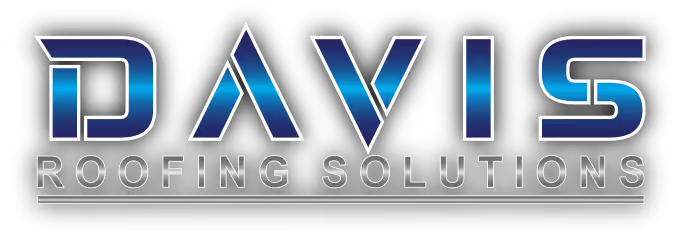Comprehensive Insights into Roof Distortions: A Deep Dive into Understanding and Resolving Sagging Roofs
Experiencing a sagging roof can evoke feelings of uncertainty and anxiety among homeowners. These distortions, characterized by an unsettling downward curve in the roofline, are glaring signals of potentially significant structural issues. Immediate, precise, and robust action becomes paramount to prevent further damage and maintain the structural integrity of your home.
In this comprehensive article presented by Davis Roofing Solutions, we delve deep into the realm of sagging roofs. Our objective is to dissect the multifarious causes behind such structural anomalies and provide you with an arsenal of strategies and solutions to tackle them effectively. By identifying the symptoms, diagnosing the underlying causes, and applying the right rectification measures, you can rest assured of preserving the robustness of your roofing and fostering a safe, secure, and serene dwelling environment.
Section 1: Unraveling the Enigma of Sagging Roofs
Subsection 1.1: What Exactly is a Sagging Roof?
A sagging roof is an architectural anomaly that displays a prominent and worrisome downward distortion in the roofline. This distortion disrupts the structural symmetry of your home and may hint at deeper structural issues that need your attention.
Subsection 1.2: Detecting Sagging Roofs – Know the Signs
Awareness is the first step towards prevention and resolution. Understanding and identifying tell-tale signs such as distinct depressions or irregularities in the roofline is paramount to the early detection and treatment of this issue.
Section 2: Root Causes of Roof Sagging – The Usual Suspects
Subsection 2.1: The Burden of Structural Overload
One major culprit behind roof sagging is structural overload. This is when an excessive weight burden due to accumulated snow, debris, or poorly distributed load overwhelms your roof, leading to deformation.
Subsection 2.2: The Perils of Inadequate Support
Insufficient or compromised structural support can also be a significant factor that contributes to roof sagging. The effects of age, weather, or poor construction can lead to this issue over time.
Section 3: Identifying Markers of Roof Structural Distortion
Subsection 3.1: Visual Clues – Changes in the Roofline
The manifestation of inconsistent rooflines or noticeable depressions are clear visual clues that your roof is structurally compromised.
Subsection 3.2: The Inside Story – Interior Damage
The impact of a sagging roof can extend to the interior of your home. Damages such as cracks appearing on walls and ceilings often point back to problems with the roofing structure.
Section 4: Understanding the Potential Risks and Consequences
Subsection 4.1: Trapped! The Problem of Water Accumulation
A sagging roof can lead to undesirable water accumulation. Over time, this can cause leaks, accelerating the deterioration process and leading to potential water damage within your home.
Subsection 4.2: Material Distress – The Impact on Roofing Materials
A sagging roof puts undue stress on roofing materials, causing premature wear and tear and potentially reducing the lifespan of your roof.
Section 5: Diagnosing the Root Cause – The Need for Professional Assessment
Subsection 5.1: Trust the Experts – The Role of Professional Roof Inspectors
Professional roof inspectors have the knowledge and tools to accurately assess your roof and determine the underlying causes of sagging.
Subsection 5.2: The Crucial Check – Evaluating Structural Support
A thorough evaluation of the structural components of your roof is indispensable for an accurate diagnosis. This involves assessing the current condition and identifying any elements that may need repair or reinforcement.
Section 6: The Road to Recovery – Remedial Measures for Sagging Roofs
Subsection 6.1: Rebuilding Strength – Reinforcement and Structural Repairs
Rectifying a sagging roof involves strengthening structural elements and repairing damaged zones. This approach can restore your roof’s stability and durability.
Subsection 6.2: Balancing Act – Load Redistribution
By redistributing loads evenly across the roof, you can alleviate stress on weak areas, preventing further sagging and ensuring structural equilibrium.
Section 7: Considering Roof Replacement – When Repairs Aren’t Enough
Subsection 7.1: When Time Takes its Toll – Addressing Aging Roof Systems
Sometimes, repairs may not be enough, especially for older roofs. In such cases, roof replacement might be the most practical and efficient solution to address sagging issues.
Subsection 7.2: Building Better Roofs – Upgrading for Enhanced Support
Installing a new roof with improved structural support can serve as a proactive measure to prevent future sagging.
Section 8: Proactive Roof Maintenance – The Key to Prevention
Subsection 8.1: Regular Roof Inspections – Your First Line of Defense
Consistent roof inspections can serve as a preventive measure, helping to identify and address potential issues before they escalate.
Subsection 8.2: Load Management – A Crucial Preventive Practice
Effective load management practices, such as avoiding excessive roof loads, can serve as a potent preventive measure against roof sagging.
In Conclusion
Sagging roofs are not just aesthetic concerns; they’re clear indicators of potential structural issues that demand immediate remediation. Through an understanding of the causes, recognizing the signs, and implementing appropriate interventions, homeowners can confidently confront these challenges and protect their homes.
At Davis Roofing Solutions, we prioritize the safety, stability, and longevity of your roofing structure. Our proficient team can provide comprehensive roof assessments, dependable repair and reinforcement services, and advise on proactive preventive strategies to extend your roof’s lifespan. Reach out to us today, and let’s work together to restore your roof’s structural soundness, ensuring a secure and serene living space for you and your loved ones for years to come.



